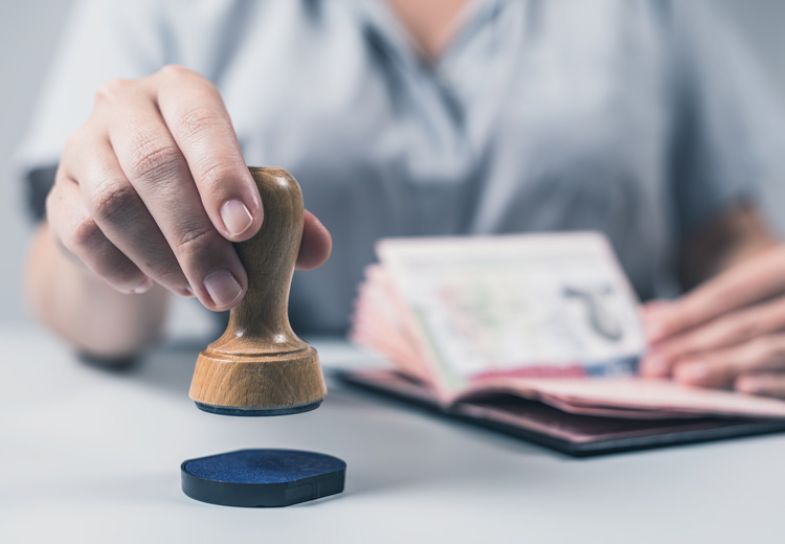How to Travel India by Train: A Complete Guide
Traveling India by train isn’t just transportation—it’s an adventure, a cultural experience, and often the most memorable part of any trip. With one of the largest rail networks in the world, India offers a unique way to see its landscapes, connect with locals, and dive into everyday life. If you’re planning to explore India like a true traveler, mastering the rail system is a must.
Why Train Travel Is the Heart of India
Trains are the lifeline of Indian travel. They connect bustling cities, tiny villages, mountains, deserts, and coastlines—all in a way flights simply can’t. The rhythmic clatter of wheels, chai vendors calling out, and long conversations with strangers create a sense of community unlike anything else.
What Makes Indian Railways Unique?
From luxury trains like the Palace on Wheels to budget sleepers used by millions daily, India’s train system is diverse, affordable, and culturally rich. It’s a world of its own, and once you understand how it works, it becomes surprisingly easy to navigate.
Understanding the Indian Railway System
A Brief Overview of Indian Railways
Indian Railways operates thousands of trains daily across more than 7,000 stations. It’s well-organized but can be overwhelming for newcomers. Knowing the essentials—train types, classes, booking systems—makes the journey smooth and enjoyable.
Types of Trains in India
Express and Superfast Trains
These are the standard long-distance trains running between cities. Superfast trains have fewer stops and slightly faster speeds.
Rajdhani, Shatabdi & Vande Bharat
These premium trains offer better comfort, catering, and punctuality. Vande Bharat is India’s modern semi-high-speed train with luxurious seating.
Local and Passenger Trains
Great for short distances and rural travel—but expect crowds and minimal facilities.
Train Classes Explained
AC First Class (1A)
The most luxurious regular-travel class. It offers privacy, lockable cabins, bedding, and comfort perfect for long routes.
AC 2-Tier (2A)
Comfortable with spacious bunks and curtains for privacy—ideal for overnight journeys.
AC 3-Tier (3A)
Affordable and popular among tourists. Air-conditioned and comfortable, though slightly more crowded.
Sleeper Class (SL)
Non-AC, budget-friendly, and a classic Indian experience. Expect open windows, local vendors, and lots of chatter.
General Unreserved (UR)
The cheapest, most crowded option. Only recommended for short distances or seasoned travelers.
How to Book Train Tickets in India
Booking Through IRCTC
IRCTC (the official site) is the easiest way to book tickets. Create an account, search trains, select class, and pay online.
Using Mobile Apps
Apps like IRCTC Rail Connect, MakeMyTrip, and Cleartrip simplify the process, especially for tourists.
Tatkal and Premium Tatkal Tickets
For last-minute travelers, Tatkal (emergency quota seats) opens one day before the journey but sells out fast.
Foreign Tourist Quota
International travelers can access special seats reserved exclusively for them—useful on popular routes like Delhi–Agra or Mumbai–Goa.
Navigating Indian Railway Stations
What to Expect at Major Stations
Stations are busy, lively, and sometimes chaotic. You’ll find food stalls, waiting rooms, shops, and porters (called “coolies” in India).
Safety Tips
- Keep your bags locked
- Avoid isolated areas
- Stick to well-lit parts of the station
Understanding Platforms & Signboards
Electronic boards display train numbers, platforms, and arrival times. Trains often arrive on either side of the platform, so stay alert.
Preparing for Your Journey
Packing Essentials
Bring:
- A travel lock
- Bed sheet or sleeping bag liner
- Power bank
- Toiletries
- Snacks
Food and Water Tips
Pack water or buy sealed bottles. On longer trains, meals or pantry services are available, but having snacks helps.
Keeping Your Belongings Safe
Use a chain and lock to secure luggage under your seat—common and recommended for overnight trips.
Onboard Experience
Seating and Sleeping Arrangements
Daytime seats transform into bunks at night. In AC classes, bedding is included; in Sleeper class, bring your own.
Food Availability on Trains
Many long-distance trains offer veg and non-veg meals. Vendors also hop on at stations selling chai, snacks, and local specialties.
Cleanliness and Restrooms
Cleanliness varies by train class. Carry tissues, sanitizer, and soap for added comfort.
Scenic Train Routes in India
Himalayan Foothill Routes
Experience jaw-dropping views on the Kalka–Shimla railway or the Darjeeling Himalayan Railway.
Coastal Journeys
The Konkan Railway (Mumbai to Goa) offers lush greenery, tunnels, rivers, and breathtaking sea views.
Desert & Rustic Rajasthan Lines
Traveling across sand dunes and historic forts feels like stepping into a storybook.
Train Etiquette & Cultural Tips
Interacting with Fellow Passengers
Trains are social spaces. People chat, share food, and sometimes share life stories. Embrace the friendliness.
Respecting Shared Spaces
Keep your sleeping berth clean, don’t play loud music, and respect others’ privacy.
Local Customs to Know
Removing shoes before climbing into a sleeper berth is a common courtesy.
Budgeting for Train Travel
Costs by Class
- 1A: Expensive
- 2A: Mid-high range
- 3A: Affordable
- SL: Very budget-friendly
- UR: Cheapest
Hidden Travel Expenses
Food, platform tickets, extra luggage, and last-minute bookings can increase costs.
Saving Money with Passes or Discounts
Students, seniors, and some tourist passes offer valuable savings.
Common Mistakes to Avoid
Last-Minute Bookings
Popular routes fill up weeks in advance.
Not Checking Train Delays
Indian trains sometimes run late—always confirm status before leaving for the station.
Carrying Too Much Luggage
Stations often involve stairs, crowds, and long walks.
Safety Tips for Solo Travelers
Best Classes for Solo Travelers
Opt for AC classes—2A or 3A—for comfort and safety.
Night Travel Precautions
Avoid keeping valuables on top berths. Use a money belt or pouch.
Emergency Contacts & Helplines
Dial 139 for railway inquiries and 182 for security assistance.
Conclusion
Traveling through India by train is one of the most enriching, budget-friendly, and unforgettable ways to explore the country. Whether you’re chasing mountains, deserts, beaches, or culture, the Indian Railway system can take you there with charm and comfort—once you learn how to navigate it. With a little preparation and a spirit of adventure, you’ll fall in love with the journey as much as the destination.
FAQs
1. Is train travel in India safe for tourists?
Yes, especially in AC classes. Following basic precautions makes it very safe.
2. When should I book my train tickets?
Book as early as possible—popular routes sell out quickly.
3. Are meals included on trains?
Only on premium trains. Others offer onboard or station food for purchase.
4. Can I travel spontaneously by train in India?
Yes, but expect challenges. Tatkal tickets help, but availability varies.
5. What’s the best class for long-distance journeys?
For comfort and affordability, AC 2-Tier or AC 3-Tier are excellent choices.
Share this content:



